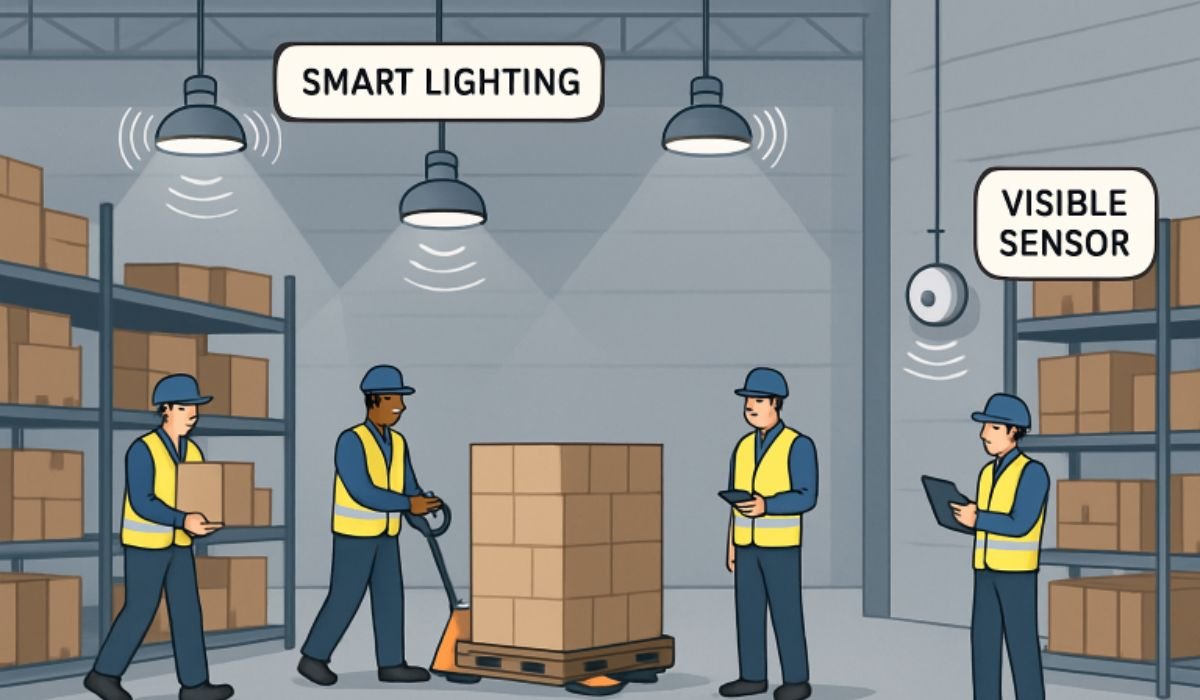Key Takeaways
- Implementing advanced lighting systems enhances visibility and reduces the risk of accidents.
- Real-time hazard detection through sensors and AI improves response times.
- Ergonomic solutions and automation reduce physical strain and injury risks.
- Wearable technology provides instant alerts and monitors worker health.
- Durable industrial flooring minimizes slips, trips, and falls.
Modern industrial operations require adaptive and robust safety measures to protect their workforce, assets, and ongoing productivity. The influx of new technology, combined with heightened safety standards, is transforming what constitutes effective safety across various environments. Steps like implementing smart lighting and advanced sensor networks enable companies to create well-lit, incident-free work zones. Tools and suppliers, such as platforms and ladders, further empower safety-focused initiatives by providing essential equipment explicitly designed for industrial use.
Establishing a multifaceted safety culture is about more than compliance—it’s about genuinely reducing hazards and guaranteeing worker well-being. Employees benefit from modernized workspaces where ergonomic seating, resilient infrastructure, and intuitive technology work together to reduce everyday risks. Industrial firms are increasingly investing in these systemic improvements, prioritizing safer workflows and more efficient operations.
Advanced Lighting Systems
Effective lighting goes beyond visibility—it’s the backbone of safety in industrial environments. Track lighting systems, renowned for their customizable positioning, enable the workspace to be illuminated according to real-time production needs. Adjustable fixtures can be directed to remove shadows, brighten walkways, and highlight operational zones during shift changes or in emergencies. The introduction of smart sensors has further optimized lighting, ensuring lights adapt as natural daylight fluctuates or as people move through an area, all while keeping energy costs low.
Detailed research indicates that well-lit work areas enhance both morale and productivity, while significantly reducing accident rates. Regular lighting upgrades, using LEDs or smart controls, are simple yet effective program steps any safety officer can champion.
Real-Time Hazard Detection
Modern safety plans increasingly rely on sophisticated sensors and artificial intelligence for instant detection of hazards. These systems are engineered to sense risks ranging from gas leaks and temperature surges to electrical faults and machine malfunctions. The integration of AI enhances pattern recognition, enabling faster and more accurate threat evaluations. Automated alerts help ensure that workers receive critical information instantly, further decreasing the potential for injury or escalation.
Facilities equipped with these solutions are far better positioned to prevent common accidents, such as fire outbreaks or chemical exposures, by stopping incidents before they escalate into critical situations. According to the Occupational Safety and Health Administration (OSHA), prompt response enabled by these detection systems is key to minimizing industrial risks.
Ergonomic Solutions
Musculoskeletal injuries are prevalent in the manufacturing and distribution sectors, often resulting from outdated workstations and repetitive manual labor. Adopting ergonomically designed work environments has proven effective in lowering both short-term discomfort and long-term injury rates. Adjustable workbenches, anti-fatigue mats, and hydraulic-lift platforms all contribute to a more comfortable and productive workspace.
Employee education is a major facet of successful ergonomics. Teaching proper lifting techniques and offering tools that minimize repetitive motion ensures that safety doesn’t stop at the design phase but extends into everyday habits and routines.
Automation and Robotics
The adoption of automation and robotics is transforming the safety landscape in warehouses and factories. Automated guided vehicles (AGVs), robotic arms, and sensor-laden conveyor belts take over hazardous and physically taxing tasks. This reduces exposure to dangerous environments and mechanical injuries. Robotics can perform in areas with high heat, chemical exposure, or heavy lifting requirements, keeping workers out of harm’s way.
Sensors such as LiDAR, proximity cameras, and ultrasonic devices enable AGVs to operate with surgical precision and avoid unexpected obstacles. Automation doesn’t replace workers—it augments safety and provides opportunities for retrained personnel to take on less risky oversight and maintenance roles.
Wearable Technology
Recent advances in wearable tech have equipped workers with personal safety tools that were unimaginable only a decade ago. Wearables, such as smartwatches, gas sensor badges, and heart rate monitors, track real-time health indicators, environmental conditions, and proximity to hazardous machinery. These devices can automatically alert users and supervisors to dangers such as extreme temperatures, fatigue, or the presence of dangerous gases.
Many companies are leveraging aggregated biometrics to proactively identify when breaks are needed or assign less strenuous tasks to those at higher risk, demonstrating a proactive approach to workplace safety.
Durable Industrial Flooring
A safe workplace begins at ground level. Flooring innovations now deliver anti-slip surfaces, impact resistance, and coatings that withstand chemical spills and other harsh conditions. These floors are engineered to prevent common incidents such as trips, slips, and falls—injuries that result in significant productivity losses and worker harm each year. Epoxy-resin coatings and rubberized padding support high-traffic and heavy-equipment movement areas, creating a safer operating base.
Regular maintenance, prompt spill cleanup, and the right choice of flooring for specific industrial processes complement other preventive measures, rounding out a holistic safety protocol.
Implementing these modern safety strategies fosters a culture where worker health is prioritized and operational efficiency is heightened, creating industrial environments that adapt effectively to both current and emerging risks.
Conclusion
Modern safety strategies are redefining how industrial workspaces operate—moving beyond reactive measures to proactive systems that truly safeguard workers and facilities. By combining technology-driven solutions, such as advanced lighting, hazard detection, and wearable devices, with ergonomic design, automation, and durable infrastructure, businesses can create safer, smarter, and more efficient environments. These innovations not only reduce risks and improve day-to-day operations but also establish a long-term culture of safety and security. In today’s evolving industrial landscape, prioritizing comprehensive safety practices is not just compliance—it’s a commitment to protecting people and ensuring sustainable productivity.
YOU MAY ALSO LIKE: How Smart Mobility Equipment Transforms Workplace Safety

